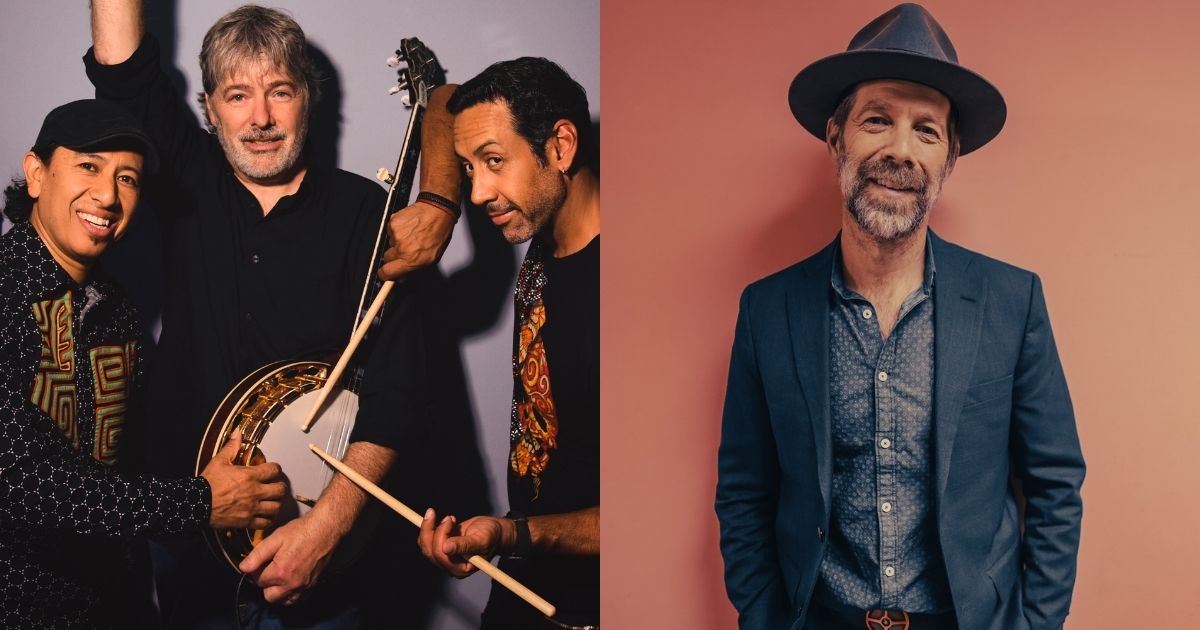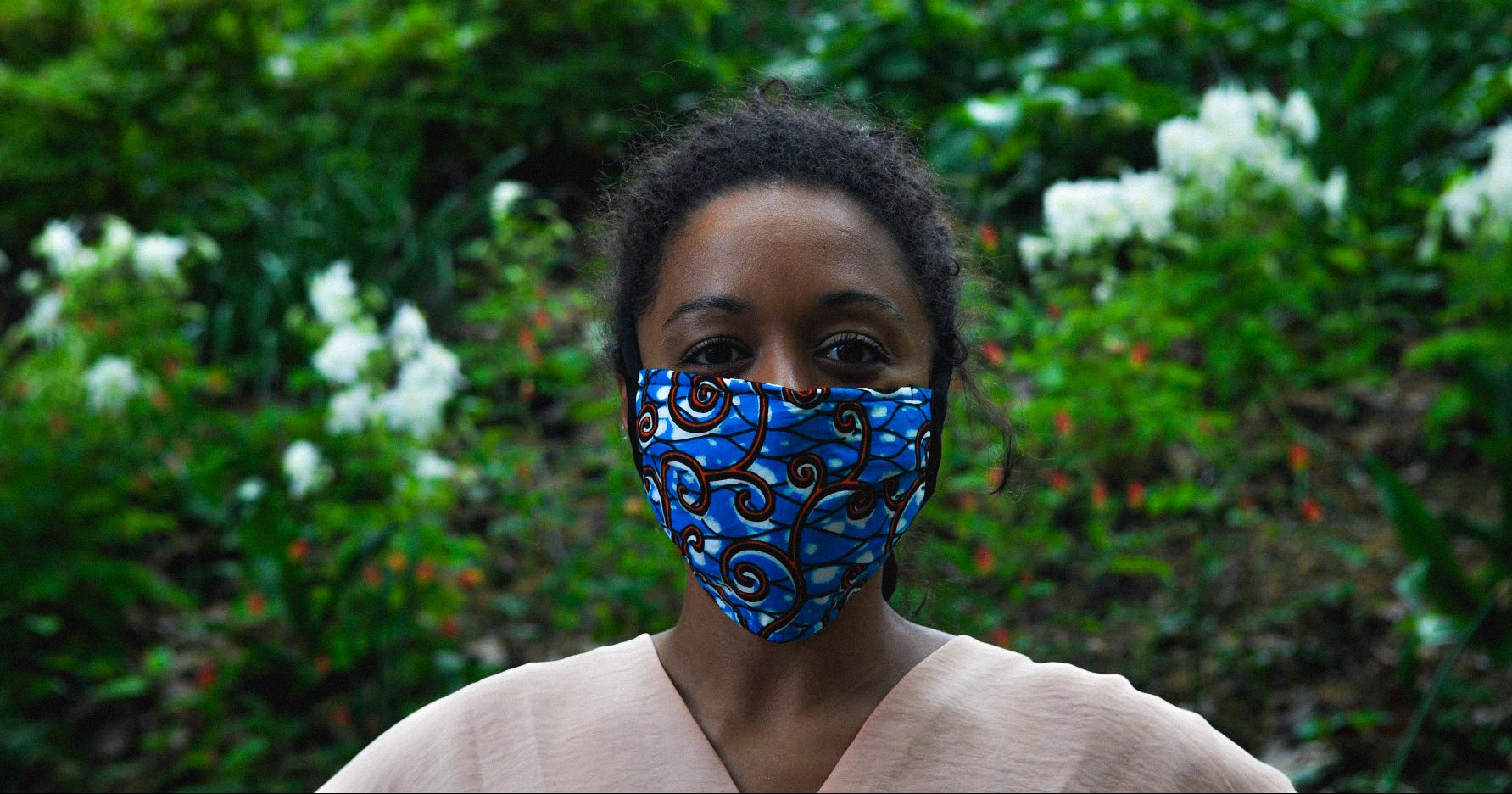From banjo geniuses to borderless country and folk, this time, our weekly new music and premiere roundup has a little bit of everything!
Kicking us off, BGS Podcast Network host and singer-songwriter Bri Bagwell, who’s behind the Only Vans podcast, brings us a lovely fresh country track called “Border Girl.” It’s about how close we all really are to each other, and how the culture, communities, and music of our neighbors really do rub off on all of us. From across the state line in Texas, Jack Barksdale accomplishes the complex through simplicity with “A Funny Song,” which is equal parts satirical and contemplative in an ethereal indie-folk package.
Virginian Jesse Smathers offers up his version of a Randall Hyton number, “Good Time Get Together,” and with the roster of bluegrass pickers he had join him in the studio for the recording, it surely must have been the titular good time get together just to make the single. Plus, Kenny Feinstein steps away from his band Water Tower for just a moment to release a bluegrass single under his own name, “Old Richmond Prison,” a “fast waltz” about mistakes, consequences, and redemption.
Banjo virtuosity brings us home, first with BEATrio featuring Béla Fleck, Edmar Castañeda, and Antonio Sánchez blending styles, sonics, and banjo, harp, and percussion on “Walnut and Western.” Not quite jazz, folk, jam band, or string band alone, the instrumental draws from seemingly endless inspirations, combining each with expertise and ease. The track is, of course, infinitely charming, raucous, and fascinating. Five-string aficionado Graham Sharp (who you’ll know from Steep Canyon Rangers) releases his brand new solo album today, How Did We Do It. We’re sharing “Living Like Thieves” from that project, an original which features Jerry Douglas, Lyndsay Pruett, Michael Ashworth, and more trotting towards a getaway while having a good time and with a vacation in mind.
It’s all worth a spin, that’s for sure! You know what we’re going to say– You Gotta Hear This!
Bri Bagwell, “Border Girl”
Artist: Bri Bagwell
Hometown: Las Cruces, New Mexico
Song: “Border Girl”
Release Date: April 18, 2025
In Their Words: “I am from the border of New Mexico, Mexico, and Texas. My hometown of Las Cruces, New Mexico, is a very beautiful blend of people and cultures. I believe a lot of people feel that they ‘belong’ to different places, straddling a line between ethnicities and geographical influences that shape who they are. Instead of wrestling with the idea of feeling very deeply rooted in Hispanic culture without having it in my blood, I always have embraced the idea that where I am from seeped into the fiber of my being, and that is a beautiful thing. Being from the border of all of these places created a girl who sings in Spanish every night, loves both Selena and George Strait, and knows that the Rio Grande is just a divider for map (and not for a heart).
“My boyfriend Paul Eason really took to this song after I wrote it and recorded all of the instruments and my vocals in our home studio in New Braunfels, Texas. It features harmonies by Lyndon Hughes from The Wilder Blue, and receives a big reaction at shows when I play it live. I think people really relate to the idea of loving where you are from and embracing all of your geographical and cultural influences!” – Bri Bagwell
Jack Barksdale, “A Funny Song”
Artist: Jack Barksdale
Hometown: Fort Worth, Texas
Song: “A Funny Song”
Album: Voices
Release Date: April 25, 2025 (single); June 13, 2025 (album)
Label: Truly Handmade Records
In Their Words: “I’m really interested in ways to inspire nuance and complexity with songwriting, which can be a surprisingly tough task. Somewhat counterintuitively, the way I tried to achieve that complexity in ‘A Funny Song’ is through simplicity. Sometimes if you strip something back to its simplest form and try to understand it through that point of view, you can gain a deeper understanding of it or, at least, a good foundation for future understanding. It’s not the final destination, but it’s good start. In this song, I used that same framework to try and understand some of, what you might call ‘the big questions.’
“This song borders on satire and works in pretty much the same way as satire, where the substance isn’t really in what’s being said, but in the listener’s reaction to what’s being said. Ultimately, I’m not trying to simplify ‘the big questions’ by telling a black-and-white story. I’m trying to create more nuanced thought around these questions in the minds of listeners, whether they agree or disagree with what the song has to say.” – Jack Barksdale
Track Credits:
Jack Barksdale – Vocals, acoustic guitar, songwriter
Diana Burgess – Cello
Jared Reynolds – Uke Bass
BEATrio (Béla Fleck, Edmar Castañeda, Antonio Sánchez), “Walnut and Western”
Artist: BEATrio (Béla Fleck, banjo; Edmar Castañeda, harp; and Antonio Sánchez, drums)
Hometown: Nashville, Tennessee
Song: “Walnut and Western”
Album: BEATrio
Release Date: April 16, 2025 (single); May 16, 2025 (album)
Label: Béla Fleck Productions
In Their Words: “Here’s a tune I have had for many years that’s been looking for a home and the right band. I am positive that this is the best setting it could have, and thrilled that I waited! Antonio and Edmar knew exactly what to do. This project kind of reminds me of the early days of the Flecktones, when audiences would go, ‘How is this supposed to work?’” – Béla Fleck
Kenny Feinstein, “Old Richmond Prison”
Artist: Kenny Feinstein
Hometown: Los Angeles, California
Song: “Old Richmond Prison”
Album: Kenny Feinstein
Release Date: April 18, 2025 (single); TBA (album)
In Their Words: “There’s something magical about siblings making music together. The way Jake and Carter work together reminds me of Ralph and Carter Stanley – it’s like they share a musical language that only brothers can understand.
“The song is about mistakes, consequences, and redemption – themes I’ve grappled with in my own life. There’s a universality to the story that I think anyone can relate to, whether it’s the weight of regret or the hope for a second chance. Water Tower will always be my home base, but this album is a chance to explore the music that shaped me as an artist. It’s a love letter to the sounds and stories that have been with me through every high and low.” – Kenny Feinstein
Graham Sharp, “Living Like Thieves”
Artist: Graham Sharp
Hometown: Asheville, North Carolina
Song: “Living Like Thieves”
Album: How Did We Do It
Release Date: April 18, 2025
Label: Enchanted Barn
In Their Words: “For me, this tune is about being in tune with the moment, paying attention to the magic when you find it. I was sitting at friend’s one afternoon thumbing through this melody and it seemed to capture the time and place (‘The prettiest thing that I know right now/ Is these little chords and the way they move/ The only place that I wanna be/ Is where I’m playing them for you”). I leaned on a recollection of an afternoon several years ago on vacation with my sweetie for the first verse. I’ve always loved Earl Scruggs’ banjo style in open D Reuben tuning and it happened to fit this song really well. Having Flux and this group of Western NC all stars on the track brought the whole thing together and made it sing!” – Graham Sharp
Track Credits:
Graham Sharp – Banjo, vocals
Ryan Stigmon – Guitar
Michael Ashworth – Bass
Jerry Douglas – Dobro
Lyndsay Pruett – Fiddle
Drew Matiluch – Mandolin
Jesse Smathers, “Good Time Get Together”
Artist: Jesse Smathers
Hometown: Floyd, Virginia
Song: “Good Time Get Together”
Release Date: April 18, 2025
Label: Mountain Home Music Company
In Their Words: “When I first ran across this old Randall Hylton tune, I knew it was something that I wanted to record. I sought out the lyrics and Wanda Dalton, Randall’s sister, wrote them out for me. I truly cherish this tune and its uplifting melody and message. When I think of my friends, loved ones, and heroes that have gone on, it is a beautiful and consoling thought to think of the music making that will happen once we get to heaven. It will truly be a ‘Good Time Get Together’!” – Jesse Smathers
Track Credits:
Jesse Smathers – Guitar, lead vocal
Hunter Berry – Fiddle
Corbin Hayslett – Banjo
Nick Goad – Mandolin, harmony vocal
Joe Hannabach – Upright bass
Patrick Robertson – Harmony vocal
Dale Perry – Harmony vocal
Photo Credit: BEATrio (Béla Fleck, Edmar Castañeda, Antonio Sánchez) by Shervin Lainez; Graham Sharp by Nathan Golub.

